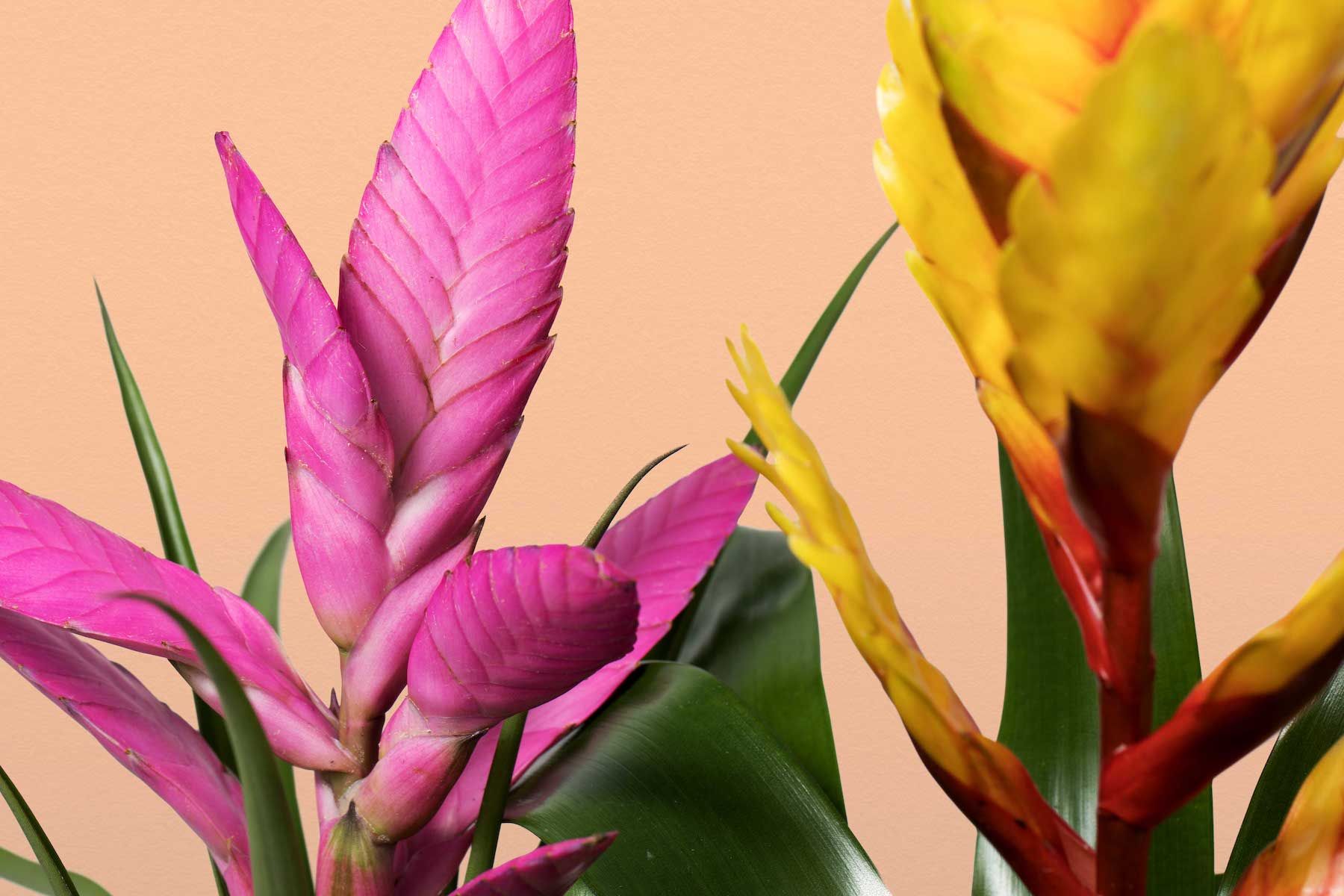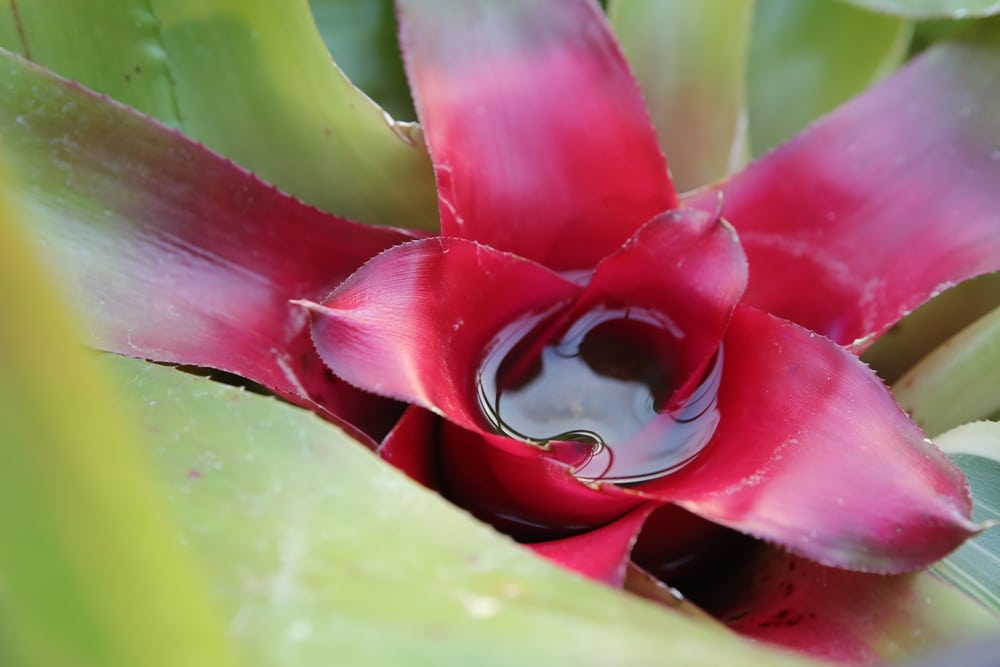Water bromeliads by pouring water into the central cup of the plant. Bromeliads should be watered once a week, or whenever the central cup is dry, and excess water should be emptied to prevent rot.
Bromeliads are beautiful and unique plants that can add a touch of tropical beauty to your home or garden. These plants have a unique water-holding structure called a central cup, which makes watering them a bit different from other plants.
We will cover how to properly water bromeliads to ensure their health and longevity. Following these simple steps will help you keep your bromeliad thriving and looking its best. So let’s dive in and learn how to properly water your bromeliad plant.

Credit: www.thesill.com
Understanding The Watering Needs Of Bromeliads
Proper watering is essential for the health and vitality of bromeliads. To ensure their well-being, it’s crucial to consider a few factors when watering these unique plants.
Factors to consider for watering bromeliads:
- Watering frequency: Bromeliads require a moderate amount of water. Watering them once a week is usually sufficient. However, the frequency may vary depending on factors such as temperature, humidity, and soil moisture.
- Watering method: Avoid overwatering by using a watering can or misting the leaves. It’s important to water directly into the center cup of the plant, as this is where bromeliads naturally collect water.
- Drainage: Bromeliads prefer well-draining soil. Ensure that the pot has sufficient drainage holes to prevent waterlogging, as excessive moisture can lead to root rot.
- Water quality: Use clean, filtered water or rainwater whenever possible. Tap water may contain minerals and chemicals that can harm bromeliads over time.
- Seasonal adjustments: Adjust the watering schedule according to the seasons. Bromeliads may require more frequent watering during hot and dry periods and less during cooler months.
- Observation: Regularly inspect the plant and its soil moisture levels. If the leaves appear wilted or the soil is consistently dry, it may indicate the need for more water. Conversely, if the leaves show signs of rot or the soil is excessively wet, reduce watering.
By understanding and adapting to the watering needs of bromeliads, you can ensure their long-term health and enjoy their stunning beauty in your home or garden.
How to Water Bromeliad: Step by Step Guide
Watering Techniques For Bromeliads
The recommended watering frequency for bromeliads can vary depending on the specific species and environmental conditions. As a general guideline, it is best to water bromeliads thoroughly but infrequently. Allow the top inch of the soil to dry out before watering again. This ensures that the roots have access to oxygen and helps prevent overwatering, which can lead to root rot.
When watering bromeliads, it is important to avoid getting water in the central cup of the plant, as this can promote bacterial growth. Instead, water the soil around the base of the plant, allowing it to soak in slowly.
Best practices for watering bromeliads include using filtered or rainwater, as they are sensitive to chemicals found in tap water. In addition, it is beneficial to provide a well-draining potting mix to avoid waterlogged conditions.
When it comes to watering bromeliads in different environments, there are a few tips to keep in mind. In hot and dry climates, it may be necessary to water more frequently, while in cooler and more humid conditions, less frequent watering may be needed. Monitoring the moisture levels and adjusting accordingly is key to maintaining optimal health for your bromeliads.
| Watering Techniques for Bromeliads |
|---|
| Water thoroughly but infrequently |
| Avoid watering the central cup |
| Use filtered or rainwater |
| Provide a well-draining potting mix |
| Adjust watering frequency based on environmental conditions |
Signs Of Overwatering And Underwatering Bromeliads
Watering your bromeliad correctly is vital for its health and well-being. Knowing the signs of overwatering and underwatering can help you adjust your watering routine accordingly.
Identifying signs of overwatering in bromeliads:
- Wilting or drooping leaves
- Yellowing or browning of leaves
- Root rot or foul smell
Spotting signs of underwatering in bromeliads:
- Leaves becoming dry and crispy
- Leaf tips turning brown
- Rapid wilting
When your bromeliad shows signs of overwatering or underwatering, it’s essential to adjust your watering routines accordingly. Adequate drainage and the right watering frequency are key factors in maintaining a healthy moisture level for your bromeliad. Remember to always check the soil moisture before watering and adjust accordingly.
Implementing A Watering Schedule For Bromeliads
Creating a watering schedule for bromeliads involves several factors to ensure their optimal growth and health.
| Factors to consider when establishing a watering routine: | Adjusting the watering schedule based on seasonal changes: |
|---|---|
|
|
Water Quality For Bromeliads
Bromeliads require proper water quality to thrive. The water you use to hydrate your bromeliads can have a significant impact on their health. Understanding the importance of water quality is essential for the successful care of these plants.
Tap water is a common choice for watering bromeliads, but it’s crucial to consider its quality. **When using tap water**, make sure to **let it sit for 24 hours** before watering your bromeliads. This allows harmful chemicals like chlorine to dissipate, ensuring a safer water source for your plants. **Avoid using softened water** as it contains high levels of salts harmful to bromeliads.
If you want to explore alternatives to tap water, several options are suitable for watering bromeliads. **Rainwater** is an excellent choice as it is natural and free from chemicals. **Distilled or reverse osmosis water** are also viable alternatives as they undergo purification processes that remove impurities and minerals. **Collected aquarium water** can be used after regular water changes as it contains beneficial nutrients for bromeliads.
Mistakes To Avoid When Watering Bromeliads
When watering bromeliads, it is important to avoid certain mistakes that can harm the plants. Overwatering and underwatering are common mistakes that should be avoided. Overwatering can lead to root rot and other fungal diseases, while underwatering can cause the plants to wilt and eventually die. It is important to find the right balance and provide the plants with adequate water.
To avoid overwatering or underwatering, here are a few tips to keep in mind:
- Check the moisture level of the soil before watering and make sure it is slightly dry between waterings.
- Use a well-draining potting mix to prevent water from sitting in the roots.
- Water the plants at their base rather than overhead to prevent the leaves from rotting.
- Avoid using water that contains high levels of chlorine or fluoride, as it can be harmful to bromeliads.
If you are facing any watering issues with your bromeliads, there are a few steps you can take to troubleshoot the problem:
- Check the drainage holes of the pot to ensure proper water drainage.
- Assess the lighting conditions, as too much or too little light can affect the water requirements of the plants.
- Monitor the temperature and humidity levels, as they can impact the rate of water absorption and evaporation.
By avoiding common mistakes and troubleshooting watering issues, you can ensure the health and vitality of your bromeliads.
Watering Bromeliads In Different Growing Environments
Bromeliads thrive in indoor environments with moderate humidity levels. To water indoor bromeliads, ensure that the soil is consistently moist but not waterlogged. Avoid water accumulation in the center cup of the plant, as this can lead to rotting. Use filtered or distilled water to avoid chlorine and other chemicals that may harm the plant. Consider misting the foliage regularly to mimic the humidity levels found in their natural habitat.
Outdoor bromeliads require different watering considerations depending on their climate. In hot and dry climates, water thoroughly and deeply to prevent dehydration. However, in cooler and wet climates, be cautious not to overwater as excessive moisture can cause rot. Feel the soil before watering and ensure it’s slightly dry. Additionally, provide adequate drainage to avoid waterlogged soil.
When watering bromeliads in containers, make sure that the pots have drainage holes to prevent waterlogging. Allow the soil to dry slightly between watering sessions, as constantly wet soil can lead to root rot. Remember to water directly into the soil rather than the center cup to prevent it from becoming a breeding ground for pests.
Frequently Asked Questions On How To Water Bromeliad
How Often Should I Water My Bromeliad?
Bromeliads should be watered once a week, allowing the soil to dry out slightly between waterings. Avoid overwatering, as it can lead to root rot. Adjust the frequency based on the humidity levels in your home and the size of your plant.
Should I Water My Bromeliad From The Top Or Bottom?
It is best to water your Bromeliad from the top, pouring water directly into the center cup of the plant. This mimics its natural environment and allows the water to reach the roots. However, if you prefer bottom watering, ensure the roots have access to the water and remove any excess after a few minutes.
Can I Use Tap Water To Water My Bromeliad?
Tap water can be used to water your Bromeliad, but it is best to let it sit for 24 hours to allow chlorine to dissipate. Alternatively, use filtered or rainwater for better results. Avoid using water that has passed through a water softener, as the high salt content can be detrimental to the plant.
How Do I Know If I Am Overwatering My Bromeliad?
Signs of overwatering in Bromeliads include yellowing or wilting leaves, foul odor, and root rot. To prevent overwatering, check the soil moisture level before watering and ensure proper drainage. Adjust the watering frequency if necessary and remove any excess water from the plant’s saucer.
Conclusion
To ensure healthy growth and vibrant blooms, it is essential to water your bromeliad properly. By adopting the right watering techniques and being mindful of its specific needs, you can help your plant thrive. Remember to consider factors like the type of bromeliad, its location, and the season when determining the watering frequency and amount.
Avoid overwatering and use well-draining soil to prevent root rot. With a little care and attention, you can provide your bromeliad with the ideal moisture it needs for optimal health and beauty.

